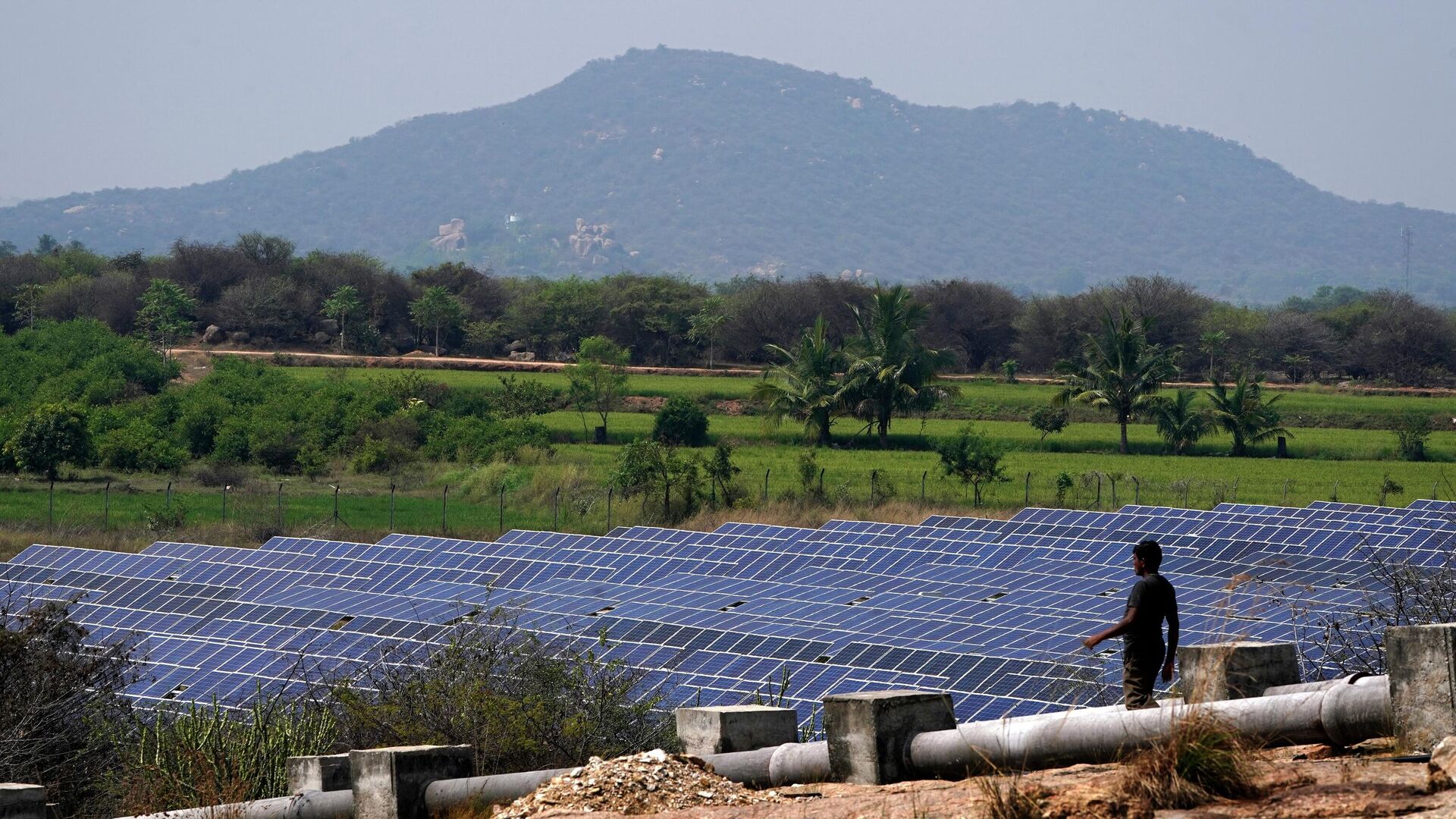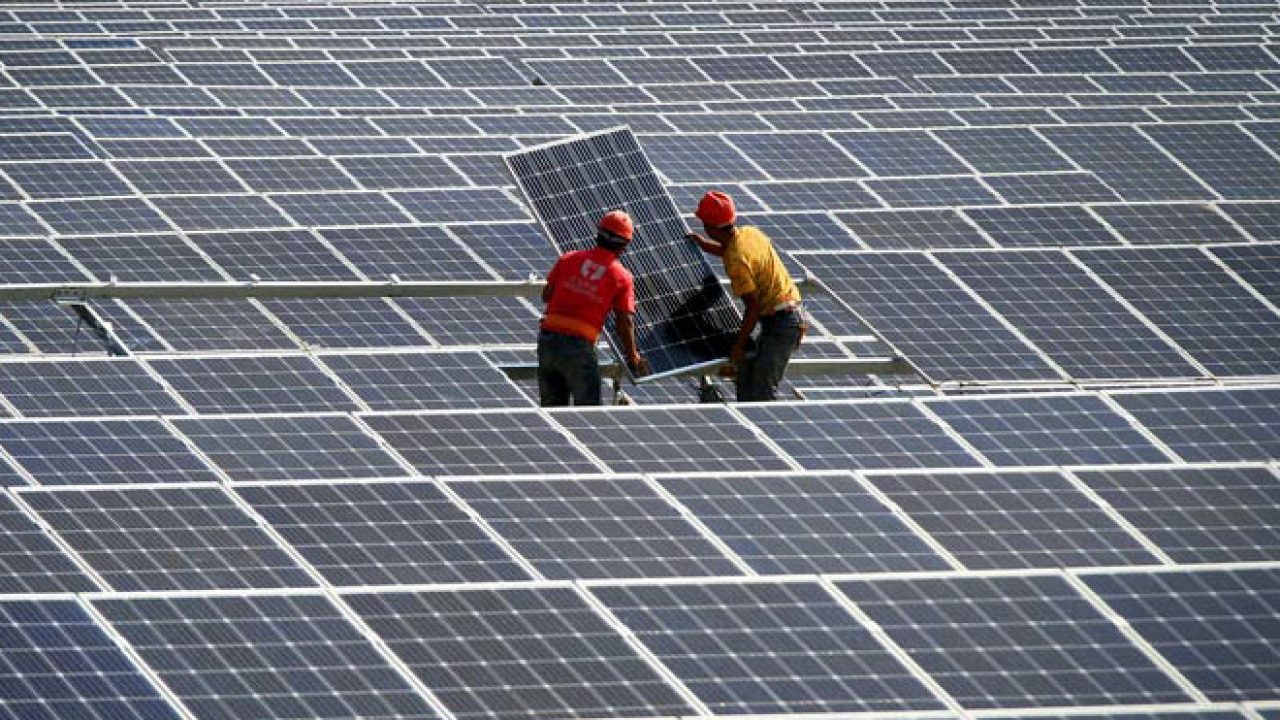India’s Ambitious Goal: Exporting 60 GW of Solar energy modules Annually by 2026

India’s Ambitious Goal: Exporting 60 GW of Solar energy modules Annually by 2026
India, a nation renowned for its rich cultural heritage and diverse landscapes, is now setting its sights on becoming a global leader in renewable energy.
As the world grapples with the pressing challenges of climate change and sustainability, India’s commitment to clean energy has taken a significant leap forward.
The Ministry of New and Renewable Energy (MNRE) has unveiled an ambitious plan to export 60 gigawatts (GW) of solar modules annually by 2026.

This bold initiative not only positions India as a key player in the global renewable energy market but also serves as a testament to the nation’s dedication to a sustainable and green future.
India’s journey towards a solar-powered future has been nothing short of remarkable. The country has made tremendous progress in the adoption of solar energy in the past decade, driven by both environmental concerns and economic incentives.
As of my last knowledge update in September 2021, India had already crossed the milestone of 40 GW of installed solar capacity, making it one of the world’s top solar producers.
The government’s solar initiatives, including the Jawaharlal Nehru National Solar Mission, various state-level policies, and favorable incentives, have played a pivotal role in promoting solar energy adoption across the nation.

Furthermore, India’s solar prowess extends to manufacturing, with several companies establishing world-class solar module manufacturing facilities. This robust domestic manufacturing capacity has laid the foundation for the MNRE’s ambitious export goals.
The Ministry of New and Renewable Energy’s vision to export 60 GW of solar modules annually by 2026 is a significant step toward establishing India as a global hub for solar technology.
This ambitious target reflects India’s intention to not only meet its domestic energy needs but also contribute to global efforts in combating climate change. Let’s delve into the key aspects of this visionary plan:
- To achieve this ambitious export target, India will need to significantly scale up its solar module manufacturing capabilities. Existing manufacturing units will have to expand production capacity, and new facilities may need to be established. This will create job opportunities and boost the economy.
- Quality is paramount in the global solar market. Indian manufacturers will need to focus on producing high-quality solar modules that meet international standards to compete effectively in the global arena. This will require investments in research and development, as well as continuous innovation.
- The Indian government, in collaboration with industry stakeholders, will need to implement policies and initiatives aimed at promoting exports. This could include incentives, subsidies, and streamlined export procedures to make Indian solar modules more competitive in the global market.

- Establishing strong partnerships with countries that have a high demand for solar energy is crucial. Collaborative efforts can help India secure long-term export contracts and provide sustainable energy solutions to countries in need.
- Continued investment in research and development is essential to stay at the forefront of solar technology. Innovations such as advanced solar cells, energy storage solutions, and efficient manufacturing processes will further enhance India’s competitiveness in the global market.
- To meet the increased demand for solar module production, India must invest in workforce development. Skilled labor and technicians are critical for maintaining high production standards.
- As India ramps up solar module production, it must also prioritize sustainability. This includes adopting eco-friendly manufacturing processes and recycling initiatives to minimize the environmental impact of solar panel production.
India will face competition from established solar module manufacturers, particularly from countries like China, which have a significant share of the global market.Developing the necessary infrastructure to support increased manufacturing and exports is a considerable undertaking.
Ensuring long-term policy stability and investor confidence is essential for attracting investments in the solar sector.Building an efficient logistics and supply chain network for the export of solar modules is crucial.

Scaling up solar module production and exports can drive economic growth, create jobs, and boost India’s manufacturing sector.India can establish itself as a global leader in renewable energy, enhancing its international standing.
Increased use of solar energy can significantly reduce greenhouse gas emissions, contributing to global climate goals.
Solar exports can help provide access to clean and affordable energy to countries that lack reliable power sources.
India’s goal to export 60 GW of solar modules annually by 2026 is a testament to the nation’s commitment to a sustainable and green future.
It is a bold step towards addressing climate change, promoting clean energy, and boosting economic growth.

To achieve this vision, India will need to overcome challenges, invest in innovation, and collaborate with global partners. If successful, this initiative will not only benefit India but also contribute to the global transition towards a cleaner and more sustainable energy future.



